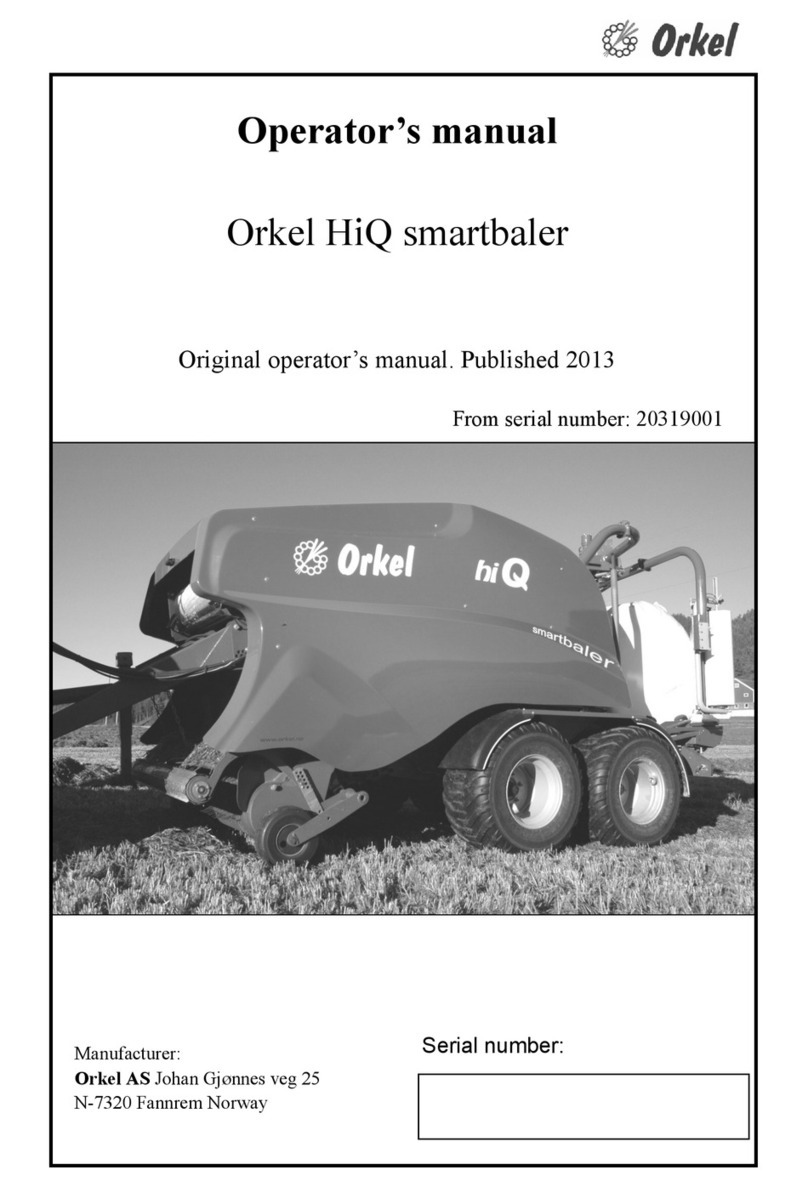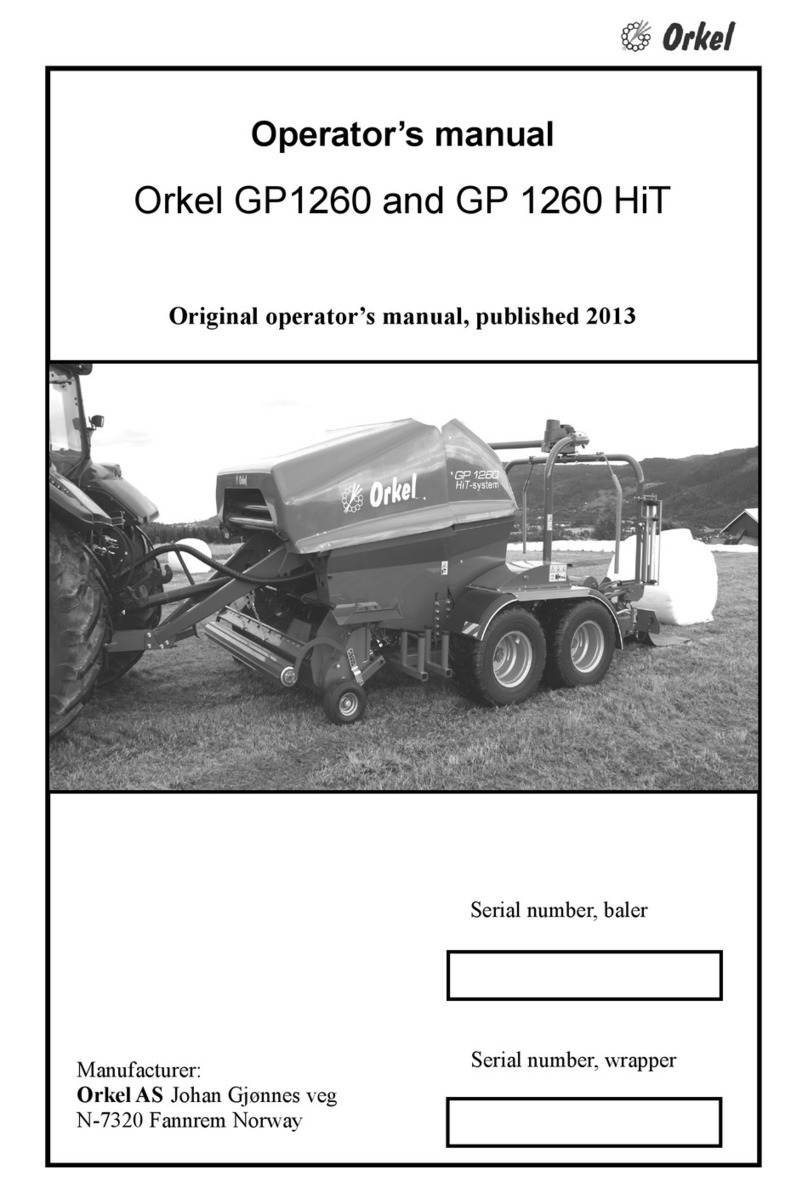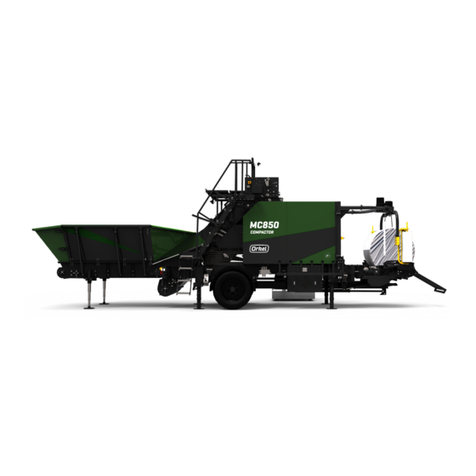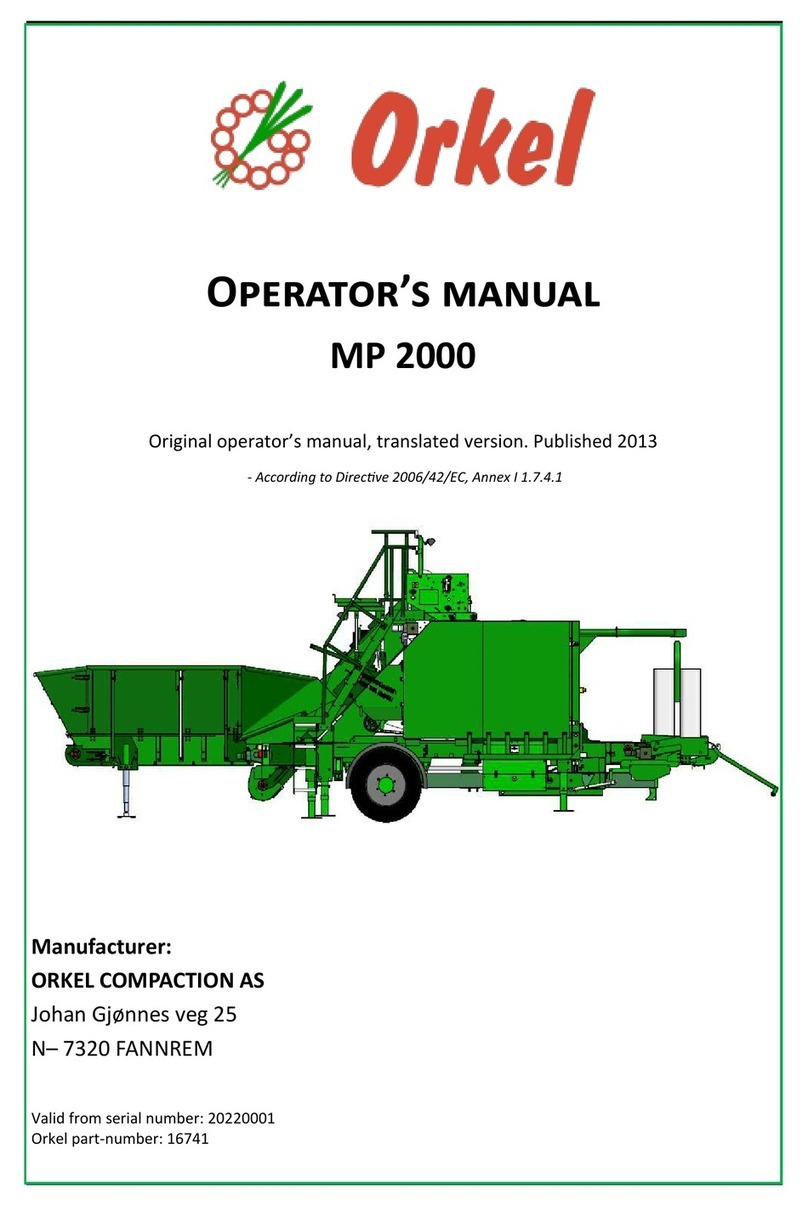
1 General
1.1 Introduction 10
1.1.1 Foreword 10
1.1.2 Disclaimer 10
1.1.3 Range of use 10
1.2 Control before delivery 11
1.2.1 Preparation at customer location 11
1.3 Identification of the machine 11
1.4 The operators manual 11
1.4.1 How to use this manual 11
1.5 Warranty 12
1.6 Declaration of conformity 13
1.1 INTRODUCTION
1.1.1 Foreword
The products from Orkel AS are well known for their high quality, reliability and strength. We will therefore
congratulate you, choosing one of our products.
To fulfill our own goals, regarding quality and strength, Orkel AS has implemented a continuing product-
developing process. All compactors undergo a thorough quality control before leaving the factory.
Read thoroughly, and familiarize yourself with our recommendations, regarding machine - safety, use and
maintenance. Make daily maintenance a routine. By doing this, the machine will be safe to operate, and you
will contribute to a longer machine lifespan and an effective utilization of the machine.
With regards
Orkel AS
1.1.2 Disclaimer
The original parts used in an Orkel® machine are designed and built to provide optimal fit, function, safety,
and structural integrity. For this reason, Orkel® DOES NOT in any circumstance approve of the use of after-
market, gray market, or imitation parts.
The information provided by Orkel® hereunder is provided “as is" and with all faults, and the entire risk asso-
ciated with such information is entirely with the Buyer.
Orkel® does not grant, explicitly or implicitly, to any party any patent rights, licenses, or any other IP rights,
whether with regard to such information itself or anything described by such information.
Information provided in this document is proprietary to Orkel®, and Orkel® reserves the right, at its sole dis-
cretion, to make any changes or modification to the information in this document or to any products and ser-
vices at any time without notice.
Orkel® does not assume responsibility for any damages associated with the machine or failure caused by
incorrect use of the machine. Neither do we assume responsibility for any changes to the product made
after initial delivery.
1.1.3 Range of use
The MC1000 compactor is designed for compressing soft organic materials to bales wrapped in plastic film
for storage or transport. The MC1000 compactor is capable of producing bales of various sizes, ranging
from Ø500 mm to Ø850 mm. The compactor must only be used for this purpose.
NOTE: Other materials can also be compressed, but have to be confirmed by Orkel AS in each case. This due to
1 GENERAL 10

































